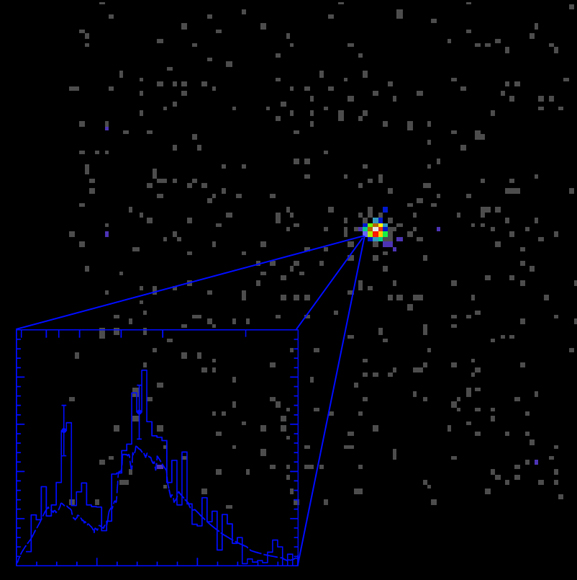
 Credit: NASA/CXC/Piro et al.
Credit: NASA/CXC/Piro et al.
GRB Wrinkles Ironed Out?
Gamma ray bursts (GRBs) are unbelievably power explosions which generate
bright flashes of gamma-ray radiation, the most energetic form of
electromagnetic radiation. Though a mystery for nearly 30 years,
astronomers have made substantial progress in unraveling this mystery by
studying the X-ray "afterglows" from GRBs. These X-ray "afterglows" are
thought to be produced by the collision of the explosion with the material
surrounding the GRB source. Studies of the X-ray afterglows have helped
astronomers show that GRBs are occurring in very distant, star forming
galaxies far from earth. This allows astronomers to determine how powerful
the explosion really is. Previous
studies of GRB X-ray afterglows seem to suggest that GRBs are
associated with the destruction of extremely massive stars as a violent
explosion called a "hypernova". Now the Chandra X-ray observatory has helped
confirm this picture by imaging at the highest resolution ever obtained an
X-ray afterglow from a burst which occurred on Dec 16, 1999. The Chandra
image of GRB 991216 obtained by the ACIS
camera by an international team of astronomers led by Luigi Piro has
allowed astronomers to study in great detail the energy distribution of the
X-ray afterglow, and for the first time has revealed the presence of X-ray
emission produced by the element iron. This iron "line emission" (shown as
the blue peak in the insert above) allows astronomers to determine the
precise location of the afterglow - astronomers calculate that the
afterglow is located in a galaxy roughly 8 billion years from earth - so
the event that Chandra saw actually occurred 8 billion years prior to Dec
16, 1999! Since the explosion was so distant, it must be extremely
powerful to be bright enough to have been seen by Chandra. Astronomers
believe the iron rich material seen by Chandra was produced inside an
extremely massive star which then died and exploded as a GRB.
Last Week *
HEA Dictionary * Archive
* Search HEAPOW
* Education
Each week the HEASARC
brings you new, exciting and beautiful images from X-ray and Gamma ray
astronomy. Check back each week and be sure to check out the HEAPOW archive!
Page Author: Dr. Michael F.
Corcoran
Last modified November 6, 2000


